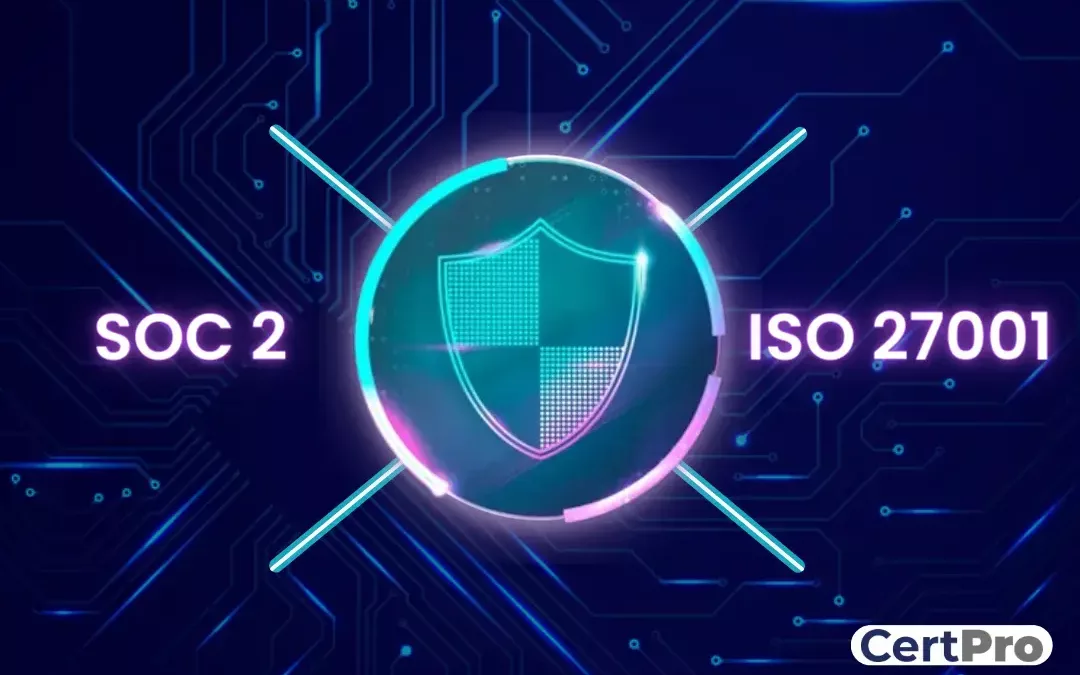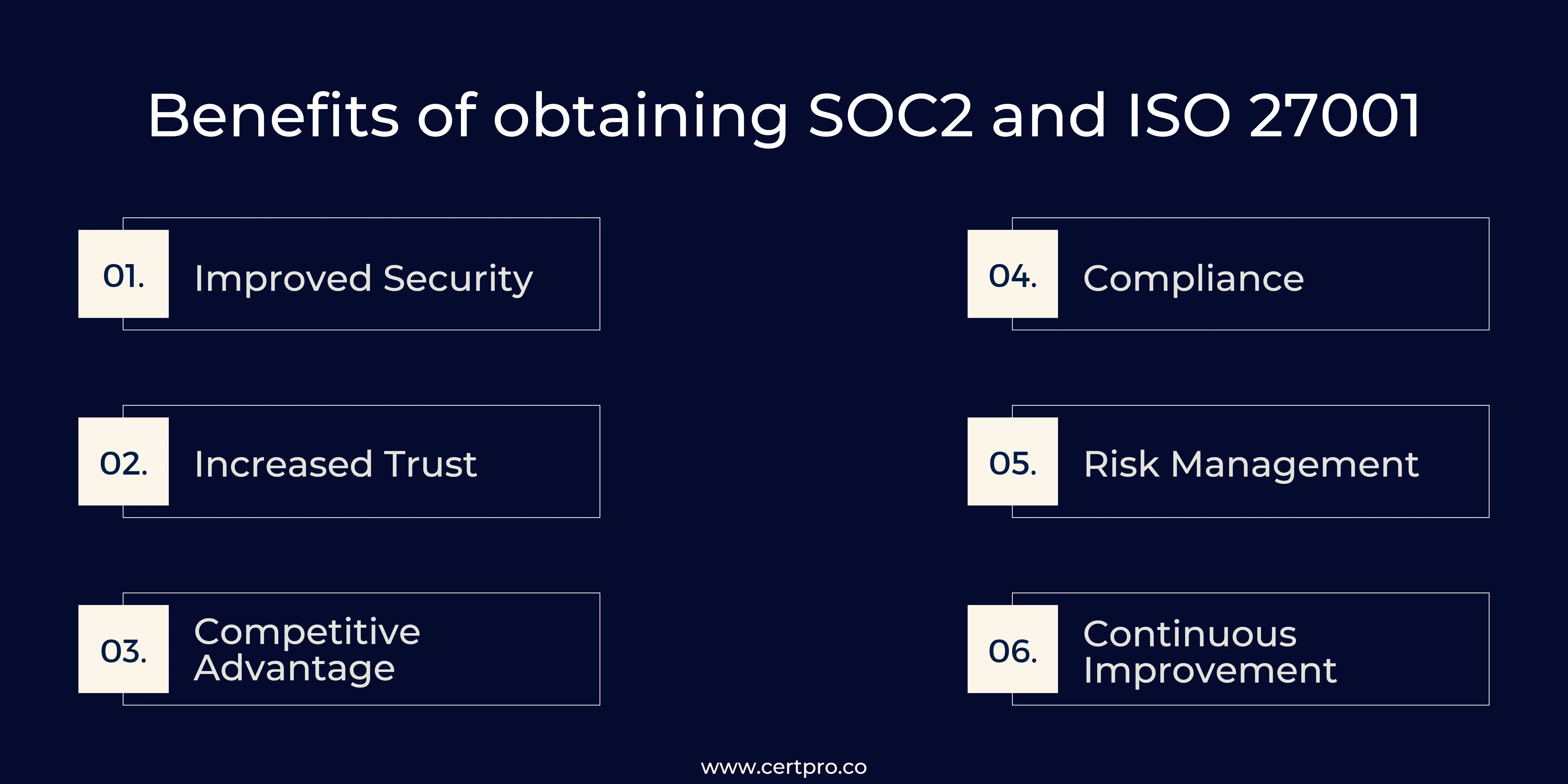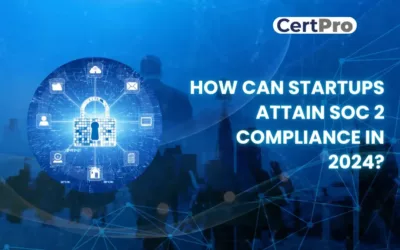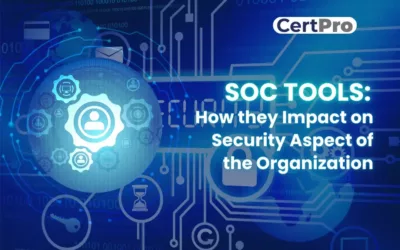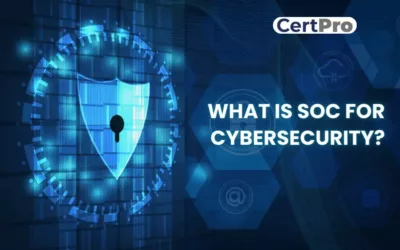Both SOC 2 and ISO 27001 are globally recognized security standards that provide companies with a comprehensive set of strategic guidelines and benchmarks to evaluate the effectiveness of their security controls and systems. These standards are designed to help companies safeguard the confidentiality, integrity, and availability of their data by implementing rigorous security controls and protocols.
One of the benefits of these standards is that they provide assurance to end-users that your company has robust security controls and protocols in place to protect their data. This is especially important in today’s digital age, where cyber threats are becoming increasingly sophisticated and prevalent. By achieving compliance with SOC 2 and ISO 27001, companies can demonstrate their commitment to data security and build trust with their customers and partners. Additionally, these standards can help companies identify potential vulnerabilities in their systems and processes and implement measures to mitigate the risks of data breaches or other security incidents.
Companies that strive to guarantee the security and integrity of their data and wish to exhibit their dedication to the best practices of data security can leverage SOC 2 and ISO 27001 as effective tools to gain a competitive edge in the marketplace by demonstrating their commitment to data security best practices.
Let us read: What are SOC 2 and ISO 27001?
Service Organization Control 2, also known as SOC 2, is a type of audit report that evaluates a service organization’s controls related to the security, availability, processing integrity, confidentiality, and privacy of customer data. SOC 2 is designed to ensure that service providers have adequate measures in place to protect the sensitive data they hold and process for their clients, such as financial information, personal data, and intellectual property. The audit process assesses the organization’s compliance with specific trust services criteria established by the American Institute of Certified Public Accountants (AICPA) related to these five areas of data protection.
Additionally, there are Type 1 and Type 2 SOC 2 audits.
- SOC 2 Type 1 affords a snapshot perspective into your present security posture by evaluating an organization’s security policy at a particular point in time.
- SOC 2 Type 2 evaluates an organization’s security policy over a longer period of time, typically six to twelve months. This audit is a useful report since it gives you a more thorough understanding of your security environment.
ISO 27001 is an international standard for information security management systems (ISMS) that outlines best practices for ensuring the confidentiality, integrity, and availability of an organization’s information assets. This includes financial information, employee data, intellectual property, and third-party data. The standard provides a systematic and risk-based approach to managing sensitive information and helps organizations identify and address security risks, threats, and vulnerabilities. By implementing ISO 27001, an organization can establish a framework to protect its information assets and meet regulatory requirements related to data protection and privacy. The standard includes a set of controls that organizations can implement to mitigate information security risks and ensure the confidentiality, integrity, and availability of their information assets.
Shared Focus on Risk Management and Continuous Improvement: Key Similarities Between SOC 2 and ISO 27001
Despite these significant variations, both ISO 27001 and SOC 2 are valuable tools that organizations may use to assess and enhance their security posture under prevailing practices and standards. Obtaining certifications in one or both of these areas ensures clients and investors that your systems have been effectively managed and your data is secure. Both address crucial components of information security, such as integrity, confidentiality, and availability. Additionally, since the two frameworks have a lot in common, becoming certified in one implies you are already working to achieve the criteria of the other. Although each of the standards is accepted worldwide, SOC 2 is more prevalent in the US, while ISO 20071 has a greater prevalence internationally.
Two prevalent standards utilized for managing information security are SOC 2 and ISO 27001. While they have some differences, there are also several similarities between them. Here are some of the main similarities between SOC 2 and ISO 27001:
- Both standards are designed to provide assurance to stakeholders that an organization has implemented effective controls to protect their information.
- Both standards require a risk-management approach to information security. This means that organizations must identify and assess the risks to their information assets and implement appropriate controls to mitigate those risks.
- Both standards require regular monitoring and review of information security controls to ensure that they remain effective over time.
- Both standards cover a wide range of information security areas, including access controls, data privacy, incident management, and physical security.
- Both standards are recognized internationally and can be used to demonstrate an organization’s commitment to information security to customers, partners, and regulators.
Overall, while there are some differences between SOC 2 and ISO 27001, both standards share a common goal of providing a framework for effective information security management.
Benefits of obtaining SOC 2 and ISO 27001
Both SOC 2 and ISO 27001 are widely recognized and respected standards for information security management. Obtaining SOC 2 attestation or ISO 27001 certification can bring numerous benefits to an organization, including:
- Improved Security: Both certifications provide a framework for implementing and maintaining an effective information security management system. Achieving certification or attestation demonstrates that the organization has implemented appropriate security controls, processes, and policies to protect its assets and customers’ data.
- Increased Trust: These certifications can help build trust and confidence with customers, partners, and stakeholders by demonstrating that the organization is committed to maintaining a high level of security and confidentiality.
- Competitive Advantage: Having SOC 2 attestation or ISO 27001 certification can differentiate an organization from its competitors and enhance its reputation as a secure and trustworthy provider of services.
- Compliance: Achieving these compliance can help organizations meet various regulatory and legal requirements, such as HIPAA, PCI-DSS, GDPR, and others.
- Risk Management: Implementing the frameworks provided by SOC 2 or ISO 27001 can help organizations identify and mitigate security risks, reducing the likelihood of data breaches, incidents, or other security-related issues.
- Continuous Improvement: Require regular monitoring, auditing, and improvement of the security management system. This can help organizations identify areas for improvement and ensure that security controls remain effective over time.
Overall, SOC 2 attestation and ISO 27001 certification are important achievements that can bring significant benefits to organizations in terms of security, compliance, trust, and competitive advantage.
WHAT ARE SOC 2 AND ISO 27001 MAPPING?
ISO 27001 governs the development and implementation of an information security management system (ISMS) as a standard. On the other hand, SOC 2 emphasizes the operationalization of security principles in order to mitigate related risks, especially given the type of services that are offered to clients.
When assessing these risks, aligning SOC 2 criteria with ISO 27001 means carefully matching the controls and requirements in the ISO 27001 standard with those in the SOC 2 framework. By using their current controls and procedures, businesses can simultaneously meet the needs of both frameworks with the help of this mapping exercise, which also offers insightful information about the links between the two.
Many firms choose to align with different standards in an effort to achieve security compliance. For example, the AICPA harmonizes the Common Criteria with ISO 27001 requirements and other specifications for various frameworks. This strategic mapping ensures a comprehensive approach to meeting security requirements across various compliance landscapes.
UNDERSTANDING THE CONTROL MAPPING DIFFERENCES BETWEEN SOC 2 AND ISO 27001
Control mapping between SOC 2 and ISO 27001 entails identifying controls in one compliance framework and linking them to similar controls in another. This ensures a strong and integrated approach to compliance, creating a smooth relationship between the two frameworks.
The main goal is to match up certain control needs between two control sets. In order to guarantee that controls are implemented correctly and satisfy the needs of both frameworks, control mapping seeks to discover areas of overlap, similarity, or gaps in controls.
The precise controls mentioned in your SOC 2 report and those delineated in your ISO 27001 implementation are the foundation of the mapping process.
Certain controls, for instance, can be transposed from SOC 2 to ISO 27001:
1. Response to an Incident:
- SOC 2 Control: Create an incident response plan to identify, address, and recover from security incidents.
- ISO 27001 Control: Create and put into practice an incident management plan to address and lessen the effects of information security incidents.
2. Access Control:
- SOC 2 Control: Put in place logical access controls to stop unauthorized users from accessing data and systems.
- ISO 27001 Control: To guarantee authorized access and stop unauthorized access to information systems, establish access control rules and procedures.
3. Physical Safety:
- SOC 2 Control: Implement safety protocols to thwart unwanted entry into facilities, machinery, and confidential information.
- Control ISO 27001: Establish physical safety boundaries, put access controls in place, and use monitoring tools to safeguard tangible assets and thwart unwanted access.
4. Change Management:
- SOC 2 Control: Implement change management procedures to guarantee that modifications to applications and systems are duly approved and put through testing.
- Control ISO 27001: Implement a methodical change management process to handle information system modifications and reduce business operations interruptions.
5. Management of Vendors:
- SOC 2 Control: Create a program for managing vendors to evaluate and reduce risks related to using outside service providers.
- ISO 27001 Control: Create a process for assessing, choosing, and keeping an eye on the information security measures that outside vendors put in place.
6. Data Protection and Restoration:
- SOC 2 Control: Test data backup and recovery procedures to determine their effectiveness and make regular backups of important data.
- ISO 27001 Control: To guarantee the availability and integrity of data, develop a plan for data backup and test data restoration processes on a regular basis.
WHAT IS THE DIFFERENCE BETWEEN SOC 2 AND ISO 27001?
While there are some similarities between ISO 27001 and SOC 2, each has its own unique advantages that make one better for certain clients than the other. These standards, which are recognized in many industries and locations, provide security measures that are unique to SOC 2 or ISO 27001 only.
1. Requirements for Compliance: Although many of the security controls listed in ISO 27001 and SOC 2 are similar, there are differences in the degree to which these controls need to be followed between the two standards.
ISO 27001 and SOC 2 both stress how crucial it is to put in place controls that are appropriate for your company. But in order to comply with ISO 27001, a wider variety of requirements must be met, and a more comprehensive set of security measures must be put in place.
SOC 2 divides security controls into five Trust Services Criteria; all SOC 2 reports must fall into one category. If the remaining four controls are applicable to your goods and services, they will be included in the scope of your SOC 2 report.
2. Relevance of Location: While SOC 2 and ISO 27001 are widely recognized in the technology and security industries, each standard has preferred locations.
Most people in North America agree that SOC 2 is the best compliance standard available. Therefore, you should definitely get a SOC 2 report if your business deals with businesses in North America. However, ISO 27001 is more widely used worldwide. Choose ISO 27001 if you are working with firms outside of North America and need to comply with regulatory regulations.
3. Timeline: The specific audit methods involved in navigating the ISO 27001 and SOC 2 certification processes greatly impact the time required for certification. Following the establishment of required controls, the auditor for ISO 27001 carefully examines paperwork and looks into the Information Security Management System’s (ISMS) compliance with the standards. For most organizations, this full procedure takes six to twelve months.
The duration of SOC 2 certification differs depending on whether SOC 2 Type 1 or Type 2 reports are selected. A SOC 2 Type 2 audit takes place across time, whereas a SOC 2 Type 1 audit evaluates controls at a single moment in time. The auditor’s responsibilities in both cases include document review, report scope definition, security control evaluation, control effectiveness observation (particular to SOC 2 Type 2 reports), and writing an extensive report on SOC 2 compliance.
While SOC 2 Type 2 compliance takes three to twelve months and includes extensive auditor observation, SOC 2 Type 1 compliance can be completed in a few months. These different schedules highlight how unique the certification procedures are and how companies must take particular things into account, such as local tastes and legal restrictions, while deciding between ISO 27001 and SOC 2.
FAQ
Who needs to comply with SOC 2 and/or ISO 27001?
Organizations that handle sensitive customer data, including financial information, personal health information, or intellectual property, may be required to comply with SOC 2 or ISO 27001. This includes service organizations such as data centers, cloud computing providers, software as a service (SaaS) providers, and managed service providers (MSPs), among others. Specifically, SOC 2 compliance is often required by organizations that provide services related to financial reporting, while ISO 27001 can be applied to any organization that wants to ensure the security of its information.
How often do organizations need to undergo SOC 2 or ISO 27001 audits?
The frequency of SOC 2 or ISO 27001 audits depends on several factors, including the organization’s size, the complexity of its operations, and the industry in which it operates. In general, organizations are required to undergo SOC 2 or ISO 27001 audits annually, but the frequency of audits may vary based on these factors. Additionally, organizations may choose to undergo interim assessments or assessments triggered by significant changes in their operations or systems.
What happens if an organization fails a SOC 2 or ISO 27001 audit?
If an organization fails a SOC 2 or ISO 27001 audit, it means that the auditors have identified deficiencies in the organization’s controls and processes related to information security. Depending on the severity of the deficiencies, the auditors may issue a qualified or adverse opinion, which can damage the organization’s reputation and make it difficult to retain or acquire new customers. The organization will be required to address the deficiencies and remediate any issues before the next audit to regain compliance.
How can organizations maintain SOC 2 or ISO 27001 compliance over time?
To maintain SOC 2 or ISO 27001 compliance over time, organizations must establish a robust security program that includes regular risk assessments, security testing, and employee training. They should also have clear policies and procedures in place that are regularly reviewed and updated to ensure that they continue to meet the changing security needs of the organization. Additionally, organizations should monitor and report on security events to identify potential vulnerabilities and take corrective action promptly. Finally, they should regularly audit and review their compliance program to ensure it remains effective and up-to-date.
Are there any common challenges that organizations face when trying to become SOC 2 or ISO 27001 compliant?
Yes, there are several common challenges that organizations face when trying to become SOC 2 or ISO 27001-compliant. These challenges include:
- Limited resources and budget
- Lack of understanding of the requirements and compliance process
- Difficulty in implementing and enforcing policies and procedures
- Limited support from senior management
- Complexity of IT systems and infrastructure
- Third-party vendor management and compliance
- Keeping up with evolving compliance standards and regulations

About the Author
RAGHURAM S
Raghuram S, Regional Manager in the United Kingdom, is a technical consulting expert with a focus on compliance and auditing. His profound understanding of technical landscapes contributes to innovative solutions that meet international standards.
HOW CAN STARTUPS ATTAIN SOC 2 COMPLIANCE IN 2024?
Trust is crucial for startups to do well in today's digital world. It's vital for establishing credibility with clients, especially in a data-driven environment where privacy is the main component. Therefore, getting a SOC 2 compliance report is crucial to building...
SOC TOOLS: How They Impact On Security Aspect Of The Organization
The changing cybersecurity landscape increases the importance of Security Operations Center (SOC) tools. Hence, it is essential for strengthening digital defenses and protecting against cyberattacks. SOC tools help security teams detect, monitor, and prevent security...
WHAT IS SOC FOR CYBERSECURITY?
In today's fast-paced digital landscape, ensuring robust cybersecurity measures is imperative for organizations aiming to protect sensitive data and maintain stakeholder trust. The American Institute of CPAs (AICPA) crafted the SOC for cybersecurity reporting...

